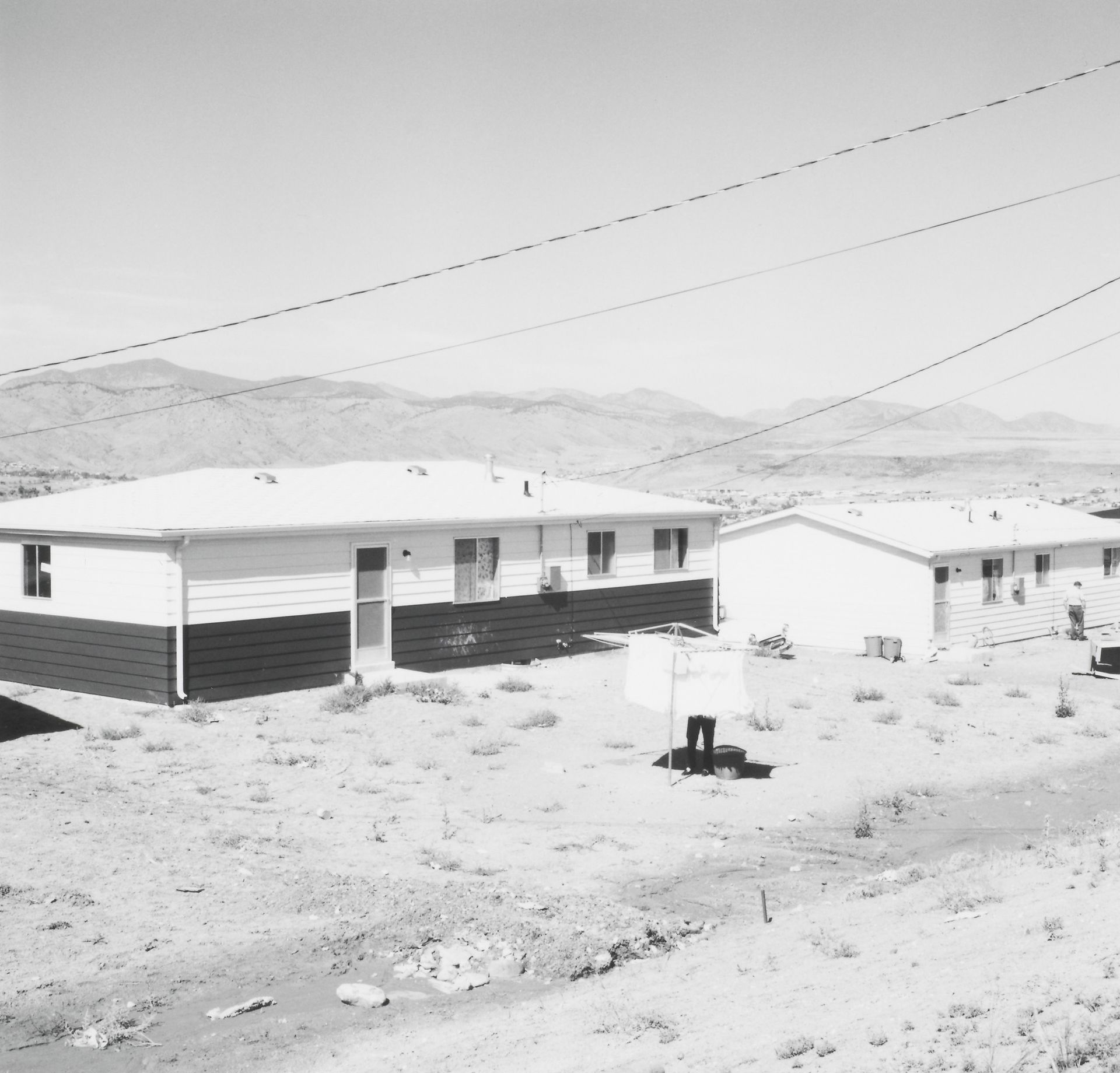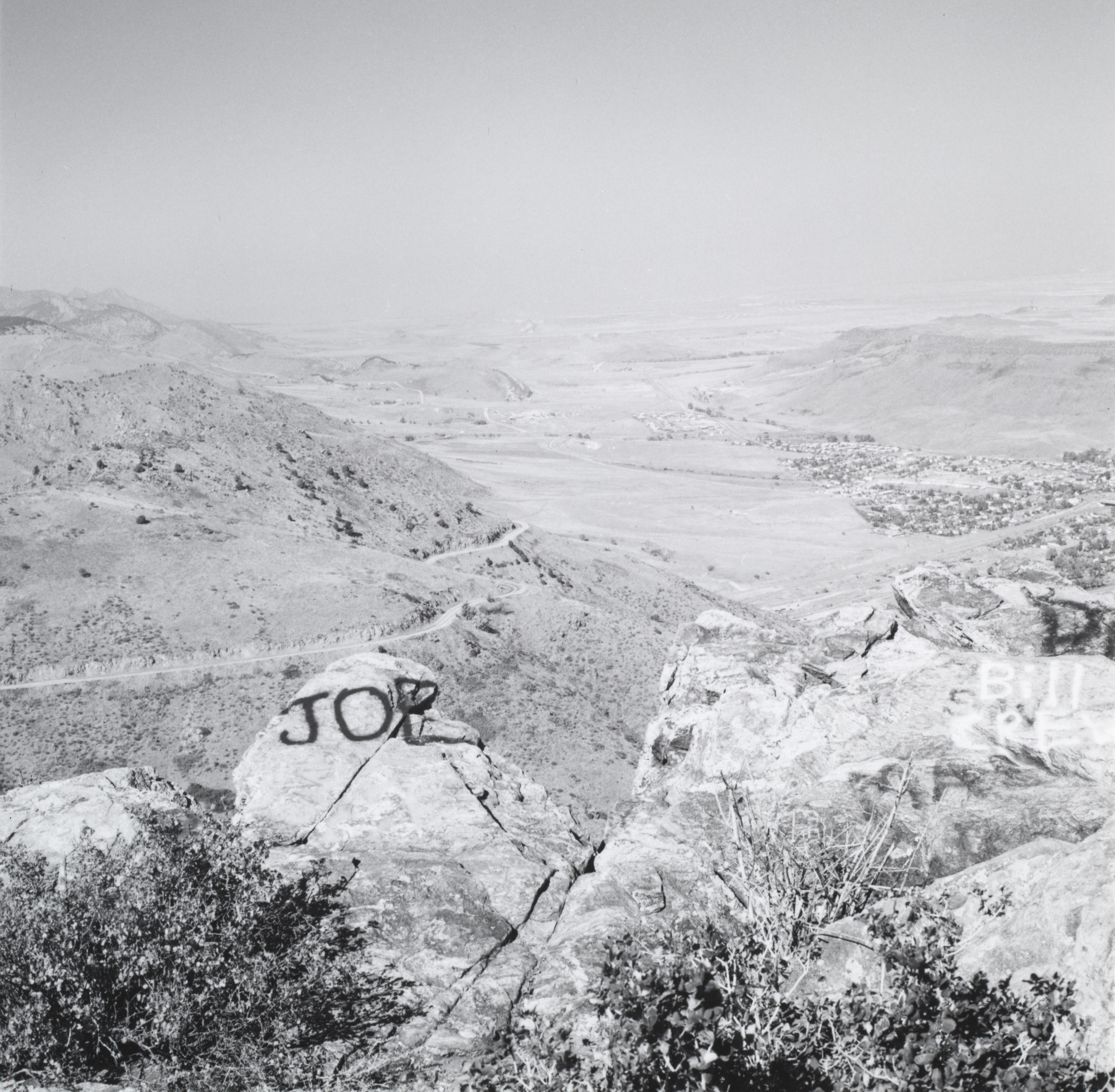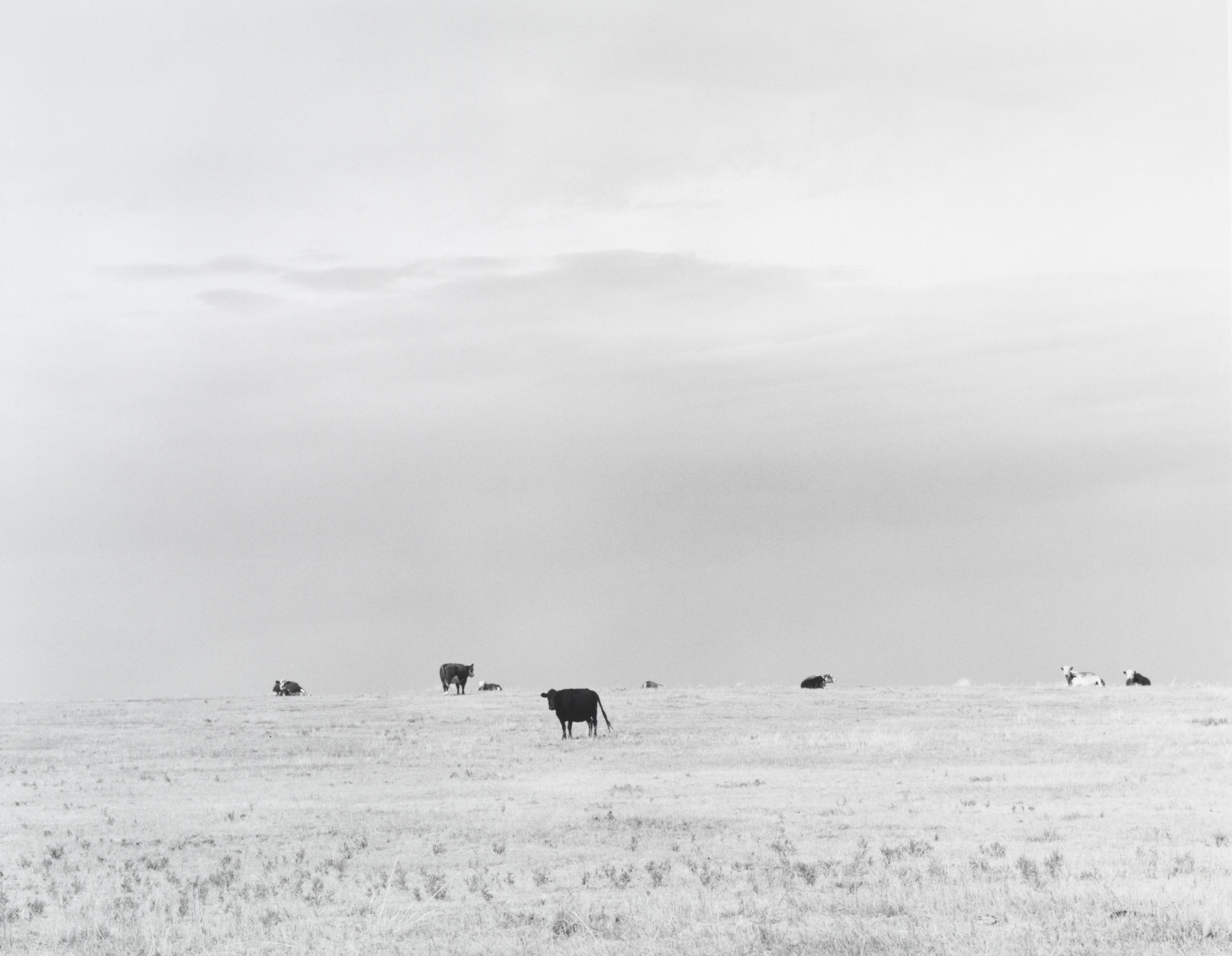
@ Robert Adams
“I shot about 450 rolls of film, all up and down the Front Range, mostly in the Denver area, though. And the work from that sat under—I printed it all and mounted every print, but it sat under my work table for about—whatever it was—I mean, like 20-some years.”
Excerpt from an Oral history interview with Robert Adams, 2010 July 20. Archives of American Art, Smithsonian Institution.
TOBY JUROVICS: …you have always been fortunate in publishing. You have had the opportunity, whether it was through the efforts of [John] Szarkowski at the beginning or Hoffman, to publish a lot. Now you’re at a point where you’ve been going back and reprinting certain early—earlier books. And this is, of course, the relationship with the Yale University Art Gallery. What is—can you talk a little bit about going back and revisiting that work? I mean, I guess the first time, in some ways, that happened was with What We Bought [What We Bought: The New World / Scenes from the Denver Metropolitan Area 1970–1974]—that was to create what you’re talking about here, this sort of fuller picture of what you were trying to—
ROBERT ADAMS: Yeah. Yeah. No, I—the work that came out in What We Bought was the result of Guggenheim [Memorial Foundation Fellowship, 1973]. And for a year, boy, it was—you know, I thought, man, I can do wonders here. And of course, what I did was completely over-reach.
And you were talking about the year that you had had the Guggenheim that became the—
ROBERT ADAMS: Oh, that became—yeah. So—and you had asked about reprinting of the books. And what happened was that I began that year thinking that I would just document the whole Denver area, inside and out. Why be small about it? And so I initially, I arranged with the Colorado Historical Society to sort of sponsor it. And that didn’t work out for a variety of reasons—not for anybody’s intended failure; it just didn’t work.
But when it came time to do the book for it, I had—I could really only get a tiny sample of what I intended to suggest to—and the problem was confounded by the fact that I didn’t have a clue about how to make a book. The other one I had edited all right and solved a few problems, but the design of it had actually been done by a man down in Flagstaff [AZ]. So this thing I completely mis-designed—I thought I could do it myself—included a lot of blank pages, which had the effect of—I don’t know, the finished product was kind of like a piece of Swiss cheese, with all mysterious kinds of holes in it. And then the printing, I didn’t really know how to tell the press people what I wanted. It was duotone, but it was a very—it was an unsuccessful version of that.
So the great bulk of the work from that year and the work—I shot about 450 rolls of film, all up and down the Front Range, mostly in the Denver area, though. And the work from that sat under—I printed it all and mounted every print, but it sat under my work table for about—whatever it was—I mean, like 20-some years—until I happened to win a prize in Germany, and the prize was they would do a book of any sort that I wanted. And I said, “Well, gee, I—about time to try to get this—”
TOBY JUROVICS: Got one here waiting for you. [Laughs.]

@ Robert Adams
“Years later, John Szarkowski did an introduction to The New West [The New West: Landscapes along the Colorado Front Range] for me, which was great—and probably saved the day.”
ROBERT ADAMS: [Laughs.] “I’ve got one here.” And Thomas Weski, who was a—really a visionary, and became a good friend, saw to it that it was produced in a way that really did match what I was after. So—but there were only a couple of thousand copies printed. And the economics and practice of distribution are so strange that I don’t know how many actually came to the United States, but they were quickly gone. Andrew Roth bought up a slug of them, I guess.
So anyway, it went OP [out-of-print] very quickly. And so that’s why it was nice to have it reprinted—and it was reprinted beautifully—at Yale. And then, they reprinted the first book, Denver [Denver: A Photographic Survey of the Metropolitan Area], which had just a few pictures in it, but it gave me an opportunity to get rid of all those blank pages which disrupted the flow of the book, and it gave me an opportunity to add a few which I had subsequently found. And it really did help. So that little book really got improved. And the printing, again, was by this very unusual method called stochastic printing, which is a random dot—very difficult to control, but since all the pictures were rather similar, it was controllable. And they did a wonderful job. So that’s how that happened.
TOBY JUROVICS: One of the things that has always seemed to me a problem about interpreting not just your work but a lot of work that was made in the—in the ’70s, was the technology of book reproduction, or the lack thereof, or the lack of funding; and in particular, thinking about the photographers and The New Topographics, where there were critics and reviewers writing about the desperate nature of these photographs. And in a—in a poor reproduction, it all seems pretty lost and desperate. And what you never got was that—
ROBERT ADAMS: Sense of light.
TOBY JUROVICS: The sense—yeah.
ROBERT ADAMS: Yeah. That’s absolutely right. Years later, John Szarkowski did an introduction to The New West [The New West: Landscapes along the Colorado Front Range] for me, which was great—and probably saved the day. But he remarked to me casually, he said, “They didn’t get it, did they?” [Referring to Rappaport Publishing, Inc., New York, NY –TJ], the printing company that did it. And Rappaport did, I think, the best they could do, but he was right. They didn’t get it—if by “it,” you mean the redemptive half of the picture.
TOBY JUROVICS: And it does seem, when you open the new edition of Denver that just pours off the page.
ROBERT ADAMS: Yeah. It really, really helps. The pictures, of course, in Denver, in What We Bought, are inherently grimmer, so it doesn’t quite pour off the page, even of a new printing, the way it does in The New West, because most of the pictures were taken up in Denver where there was a lot of air pollution, as opposed to mostly down in Colorado Springs, where it hadn’t quite reached the levels it had northward.

@ Robert Adams
“But what began to frighten me about teaching was, as I looked at my colleagues who had been there—40s and 50s, and I began to see how burnt-out they were and how abused they were in many ways. It’s a very cruel profession: You get older; you get tired.”
TOBY JUROVICS: Do you—I suppose we’re going to bounce back and forth a little in terms of chronology, but since we’re talking about—talking about those particular images, can you talk a little bit about your printing? I think that, in particular this year, there’s been a lot of interest, renewed interest, in The New Topographics. And I’m sure it’s something that everybody who was in the show is absolutely sick of talking about at this point. But there was a very particular palette that you developed to print with. And also, I think that in particular Frank Gohlke, many of his early images have a similar feel, and also Lewis Baltz. And it’s very kind of—I’m going to call it kind of high key and kind of dry feeling; certainly against the prevailing aesthetic, which would have been a sort of, at this point, third or fourth generation sort of baroque f/64 style.
How did—how did you develop that, and what was your—was there a lot of interaction with Lewis or with Frank or with other people? I mean, you all kind of came to work with a very similar feel at the same time.
ROBERT ADAMS: In answer to the latter part of that question, no, I didn’t—I didn’t feel I was working with them in terms of solving a technical problem there. The thing that drove me, frankly, and always drives me, is the subject. The burden and the attraction and the hope that I carry with me as a photographer is the subject. And I had—you know, I walked a lot of wheat fields and I climbed a lot of mountains. And I just knew that this light was something other than what Ansel Adams was working with, and I loved it and I wanted to tell people about it. So that’s what brought me to it. And I assume that Frank found that in Texas, and Lewis in a somewhat related way found it in California.
Let’s see, what was the other part of your question?
TOBY JUROVICS: [Laughs.] Now I’ve got to remember.
ROBERT ADAMS: Well, the—just the—
TOBY JUROVICS: That—you know, and what’s always struck me—and there’s a—there’s a photograph in particular. It’s a new home under construction and you—when you’re looking at this print you almost have to squint, because the light coming off that siding is so—is so bright. [Referring to Newly Completed Tract House, Colorado Springs, Colorado, 1968; in The New West: Landscapes along the Colorado Front Range, With a foreward by John Szarkowski, Boulder: Colorado Associated University Press, 1974, page 28 –TJ]
ROBERT ADAMS: Which is—which is exactly what I wanted. And it depended on—obviously, on getting the right negatives, which took me a while. But it also depended on having the right paper, which I had until 1973, and then suddenly it was unavailable for several years because of the sequence of the oil crisis, which translated into the Hunts [Nelson Bunker Hunt and William Herbert Hunt] trying to corner all the silver, and that translated into Agfa [AgfaPhoto GmbH, Germany –TJ] taking all the silver out of their paper; so that what had been glorious Brovira—Agfa Brovira paper, became something just a shade better than a Xerox sheet. And so—but the struggle was to get those things in line.
But then the printing was as exacting as I’ve ever done in my life. It was not unusual to drop 10 or 15 sheets of paper right into the trash basket, to get something that was—seemed right. So that was—that was—that was—[inaudible]—
TOBY JUROVICS: And how did you—you know, now we know how you become a photographer: you get an M.F.A. You worked some with Myron Wood in Colorado. Is that—how—
ROBERT ADAMS: How did I—how did I do it?
TOBY JUROVICS: How’d you do it?
ROBERT ADAMS: You know, I thought I was going to be an English teacher, and so I went to school and suffered a lot, and went through the indignities of graduate school and hated every minute of it—and liked teaching, actually; although I was mercilessly hard. But what began to frighten me about teaching was, as I looked at my colleagues who had been there—40s and 50s, and I began to see how burnt-out they were and how abused they were in many ways. It’s a very cruel profession: You get older; you get tired. The kids never get old; they just stay kind of, you know—they’re innocent, of course, but they’re intense and they’re always on you. And I looked at my colleagues and I thought, “Man, do I want to end up at—this way at age 55, and another 10 years go to?”

@ Robert Adams
“The burden and the attraction and the hope that I carry with me as a photographer is the subject.”
So on the one hand, I became increasingly dissatisfied with teaching. And this was, of course, during the Vietnam War, so the nature of the students was changing. And my sympathies were with the students, but—and congruent with that, I had a friend from college who came back—he’d been in the service in Korea, and he came back and he had a little 35 millimeter camera, and he said, “You know, Bob, this is really fun.” He said, “You ought to try this.” And I’d taken pictures just while we were out hiking, but never with any serious intent.
So I bought a sort of a grade-B, 35 millimeter, single-lens reflex called a Miranda—which was actually, you know, an okay camera—and began taking pictures. I found it very interesting. And coordinate with that, Friday afternoons when I was done teaching, I went over to the Colorado Springs Arts Center, which is an unusual place which has a wonderful library. At that time, nobody used it. And I discovered that they had a complete run of Aperture and a complete run of Camera Work, and I could just sit there and go through. And it simply opened up what seemed to me just a fantastic, thrilling kind of world. And so I spent my Friday afternoons learning photo history from that library, and glorying in those two publications.
And then I—you know, I just blindly stumbled. I taught myself to , you know, get the film on a plastic reel, and I darkened up our dining room and went into a closet to load film and, you know, the whole nine yards. And then somewhere along the line I found out that in town there was one other guy who was doing interesting photographic work. His name was Myron Wood. And he had studied a little bit under [Edward] Weston. He had been a—he was a vet in World War II and had been hit by a burst of machine gun fire and put out of action that way and—but had recovered. And he’d gone out to study a little bit, or at least hang around Carmel, and then had come to Colorado and had become enamored of a 35-millimeter—of Leica. And he just—was a remarkable man. And he set himself a vaguely defined but very real goal of just telling affectionately every story he could find about the state of Colorado: about the people, about the landscape, its history.
So I started hanging around his house. He was a very generous—eccentric, but generous man. And he lived in a big house with a remarkable wife who was a writer and taking care of all of the business end of things for him. And he had four children. So he had this kind of boiling artistic household, and a big house. And I just watched him develop and I looked at his prints, which were pretty much full-scale. They weren’t Ansel Adams, but they were—they were Ansel Adams sort of modified by the reportage tradition.
And I came to admire the spirit of the guy as much as anything. He knew some about the art world, but he didn’t care a whole hell of a lot for it. And it left him free to explore in a way that seemed to me to be really admirable and exciting. So we—and he also introduced me to what photo publishing there was being done at that time. He had a modest library.
So from that point, as I began to discover how much fun it was and the fact that I could engage the—well, I should back up and say that as people who were teaching saw that I was doing this mysterious thing, it made no sense: I was throwing away my career, a safe—at that point, I was—you know, I was—I could have had that job for the rest of my life—
All rights reserved. Images @ Robert Adams and text @ Archives of American Art, Smithsonian Institution.
